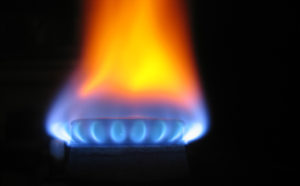 Natural gas fell for a third day in early European trading on Monday as widespread very warm to hot weather was offset by forecasts for a cooling across the northern, central and eastern US in the beginning of August.
Natural gas fell for a third day in early European trading on Monday as widespread very warm to hot weather was offset by forecasts for a cooling across the northern, central and eastern US in the beginning of August.
Natural gas for delivery in August traded 0.50% lower at $2.762 per million British thermal units at 08:24 GMT, shifting in a daily range of $2.769 – $2.735 per mBtu. The contract slid 1.4% on Friday to $2.776 per mBtu, closing the week 3.4% lower.
According to NatGasWeather.com, natural gas demand in the US will be very high compared to normal the next few days, before afterwards easing to high through August 1st. Hot temperatures will engulf most of the country this week, with highs in the upper 80s to lower 90s over the Great Lakes and Northeast, while readings across the central and southern US, including Texas, peak in the mid 90s to 100s. The Southwest will remain quite hot as well, while the Northwest cools a bit due to passing Pacific weather systems.
As previously projected, Canadian systems will hit the Midwest and northeastern US late this week, spilling showers and seasonal temperatures, while the dome of high pressure shifts into the western US. This will result in the region warming up substantially, with highs over California reaching the 90s and 100s.
Strong high pressure will continue to dominate the western and southern regions of the country in the first week of August, NatGasWeather.com said, but the central US will enjoy near-normal conditions. The Great Lakes and East will be cooler than usual, especially after August 5th, as weather systems with showers track through, resulting in a return to above-average inventory builds after the one next week comes below usual.
Temperatures
According to AccuWeather.com, New York will peak at 83 degrees on July 28th, 1 below normal, before jumping into the toasty low-mid 90s over the following four days. Readings in Chicago will max out at 83-85 degrees through August 1st, compared to the average 84, but will cool to the upper 70s during the following week.
Down South, highs in Houston will range at 98-102 degrees through August 3rd, well above the usual 93, followed by a drop to the comfortable upper 80s and lower 90s the following ten days. On the West Coast, Los Angeles will peak at 83 degrees today, 1 below normal, before jumping to 89 degrees on July 30-31st.
Supplies
The Energy Information Administration released a somewhat bullish inventory report last Thursday which initially caused a spike in prices but was followed by a sell-off through the close based on weather developments.
The government agency reported that US natural gas stockpiles rose by 68 billion cubic feet in the week ended July 17th, slightly below analysts’ median forecast of a 70-bcf gain. However, the EIA showed a reclassification from working gas to base gas of 7 bcf, which trimmed the number to 61 bcf. Total gas held in US storage hubs after the reclassification amounted to 2.828 trillion cubic feet, expanding a surplus to the five-year average of 2.747 trillion to 2.9% from 2.7% during the previous period.
This Thursdays report will print a smaller inventory gain due to last weeks continued very warm to hot temperatures, particularly over the southern half of the country. Initial estimates point to a build of slightly over 50 bcf for the seven days ending July 24th, compared to the five-year average increase of 48 bcf, while supplies rose by 88 bcf a year earlier.
Moreover, very high national natural gas demand during portions of the current week will lead to an even leaner, and below-average build, for the August 6th report, probably around 40 bcf, compared to the five-year average gain for the week ended July 31st of 53 bcf and the year-ago one of 83 bcf.
Pivot points
According to Binary Tribune’s daily analysis, August natural gas futures’ central pivot point stands at $2.788. In case the contract penetrates the first resistance level at $2.803 per million British thermal units, it will encounter next resistance at $2.830. If breached, upside movement may attempt to advance to $2.845 per mBtu.
If the energy source drops below its S1 level at $2.761 per mBtu, it will next see support at $2.746. In case the second key support zone is breached, the power-station fuel’s downward movement may extend to $2.719 per mBtu.





